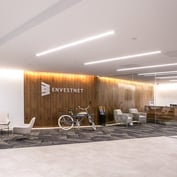Every manager dreads the employee who wallows in his own despair. You know the type. They are not happy unless they are unhappy. They contaminate the air and distract your team from its mission. They demand attention for their woes but rarely proffer a solution—or worse, rarely act to create a positive outcome. They’d rather point out the failings of others, including you, than be accountable for their own well-being.
Sadly, with the financial services business facing such an acute talent shortage, more firms are indulging such behavior for fear of losing a capable person—even one who is not living up to her potential or who is undermining the firm’s culture. Do we really have to accept such a state of affairs?
[Read Angie Herbers' July column on how to keep employees happy.]
In a recent forum involving Pershing clients, the subject of people and culture was top of everybody’s mind. One executive remarked that his singular focus for the past year was building an organization where the right people were matched to the right jobs, and where motivated individuals could flourish. In order to accomplish his people development goals, he said, he had to begin with himself. By coincidence, amidst this soul searching, he heard a former Harvard professor of psychology named Shawn Achor speak on the power of happiness in transforming individuals and businesses.
The executive said Achor’s talk caused him to rethink everything, from how he greeted employees to how he conducted meetings. “Now,” he shared, “instead of starting company meetings with all the crap that’s bothering me, I begin by identifying three things that make me happy. It’s remarkable how this changes the tenor of the discussion and the commitment to producing a solution and an optimal outcome.”
Inspired by this discussion, I picked up a copy of Achor’s book, “The Happiness Advantage.” While much of the content may seem intuitive, the author deftly helps the reader understand how happiness creates success and how we can employ seven specific, proven patterns to improve achievement:
The Happiness Advantage. Because positive brains have a biological advantage over brains that are neutral or negative, this principle shows us how to retrain our brains to capitalize on positivity and improve our productivity and performance.
The Fulcrum and the Lever. Our mindset shapes how we experience the world. This principle teaches us how we can adjust our mindset to be more optimistic and create the power to be more successful.
The Tetris Effect. When our brains get stuck in a pattern of negativity, we set ourselves up to lose. This principle explains how to retrain our brains to spot patterns of possibility, so we can see—and seize—opportunities wherever we look.
Falling Up. In the midst of defeat, stress and crisis, our brains map different paths to help us cope. This principle is about finding the mental path that leads us up out of failure or suffering to create new success.
The Zorro Circle. When we are overwhelmed by challenges, our emotions take over our rational brain. This principle empowers us to regain control, first by focusing on small, manageable goals, and then gradually expanding our circle to achieve bigger ones.








 July 01, 2011 at 08:00 PM
July 01, 2011 at 08:00 PM










